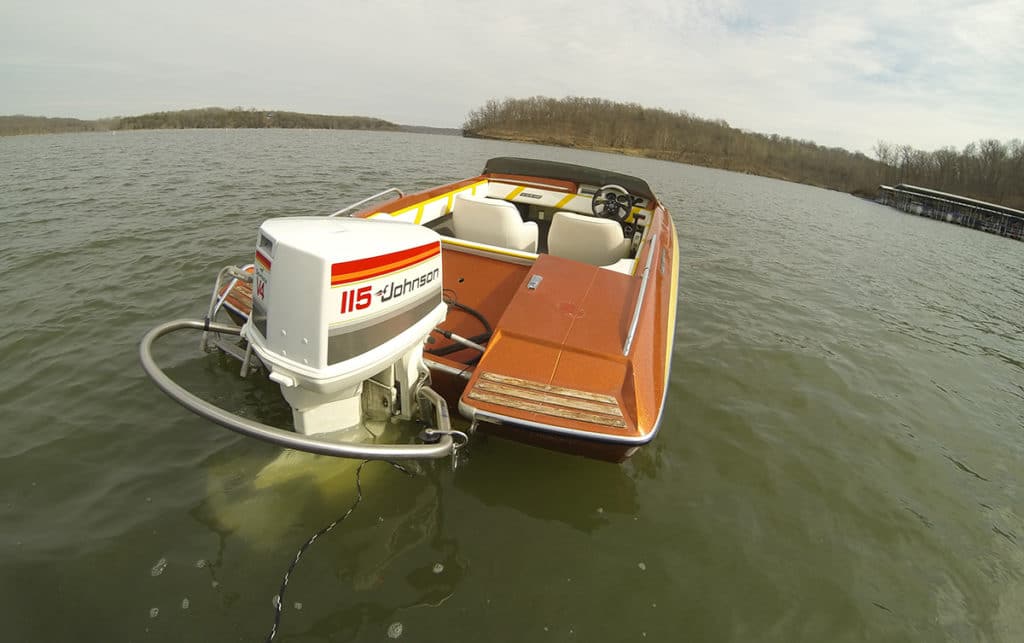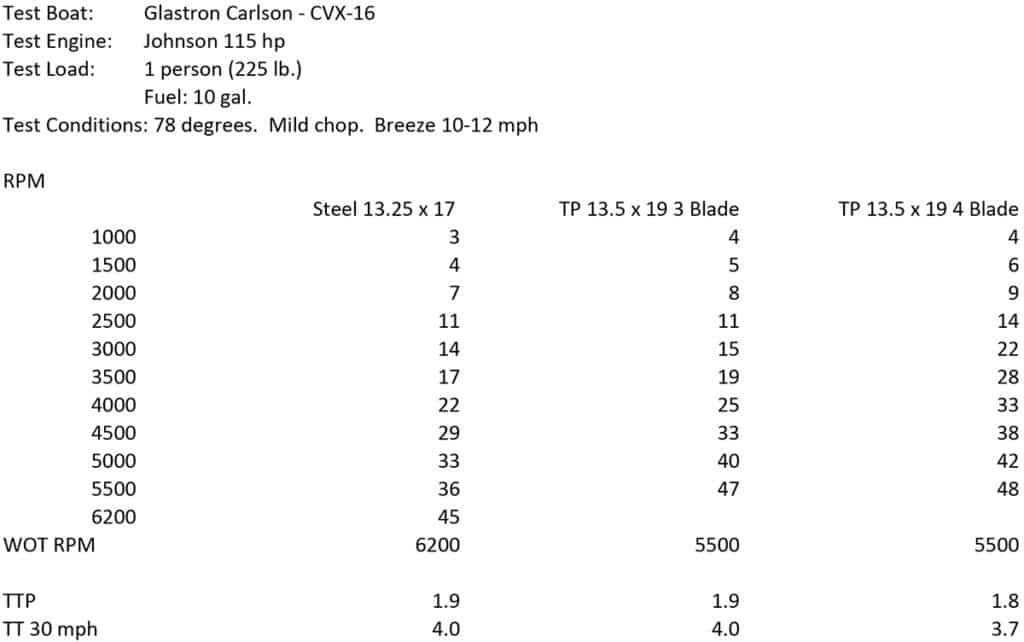
It’s not easy to find the right prop for your boat. Slight differences in pitch, diameter, depth of cup and rake of the blade all figure into the magic juice of best performance. Then there’s the number of blades. Conventional wisdom says a four-blade prop will get up on plane more quickly but fall behind a comparable three-blade prop.
Yet when we ran two Turning Point props against each other as replacements for the Glastron CVX 16’s stainless-steel prop, what we discovered surprised us.
First, here’s a little info about these props. Turning Point Propellers uses a squeeze-cast process to produce aluminum props with a fine grain that gives them thinner, stronger blades. They tout them to be comparable to stainless-steel props of comparable dimension. They claim further that repair shops can rebuild blades to the same strength should damage occur.
The blades are shipped with a hub designed for your outboard, and it fits into the center of the blades. Hubs can fail, and these are easily replaced without tools, meaning you can make that repair, if necessary, in your garage.
We ran the numbers on the original prop. We suspected it was worn down with age and contact with the bottom, and the pitch was clearly too short. The motor over-revved to 6,200 rpm — dangerous for that motor.

The Turning Point 13½-by-19-inch three-blade prop was recommended by the company, and its results showed that Turning Point knew its stuff. There was an immediate improvement, boosting top speed to 47 mph, but our hole shot wasn’t improved a bit.
To get the boost we wanted for skiing, we turned to the four-blade prop in 13½ by 19 inches. We weren’t a bit surprised that we got a nice boost in the hole shot, but were even more surprised when we clocked an extra 1 mph on the top-end speed. That doesn’t usually happen with the drag created by that extra blade.
It would have been interesting to test stainless-steel props of the same dimension, but the cost exceeds the aluminum props by hundreds of dollars, and we didn’t plan to make that investment in the prop, even if it might generate another 1 mph or so.









